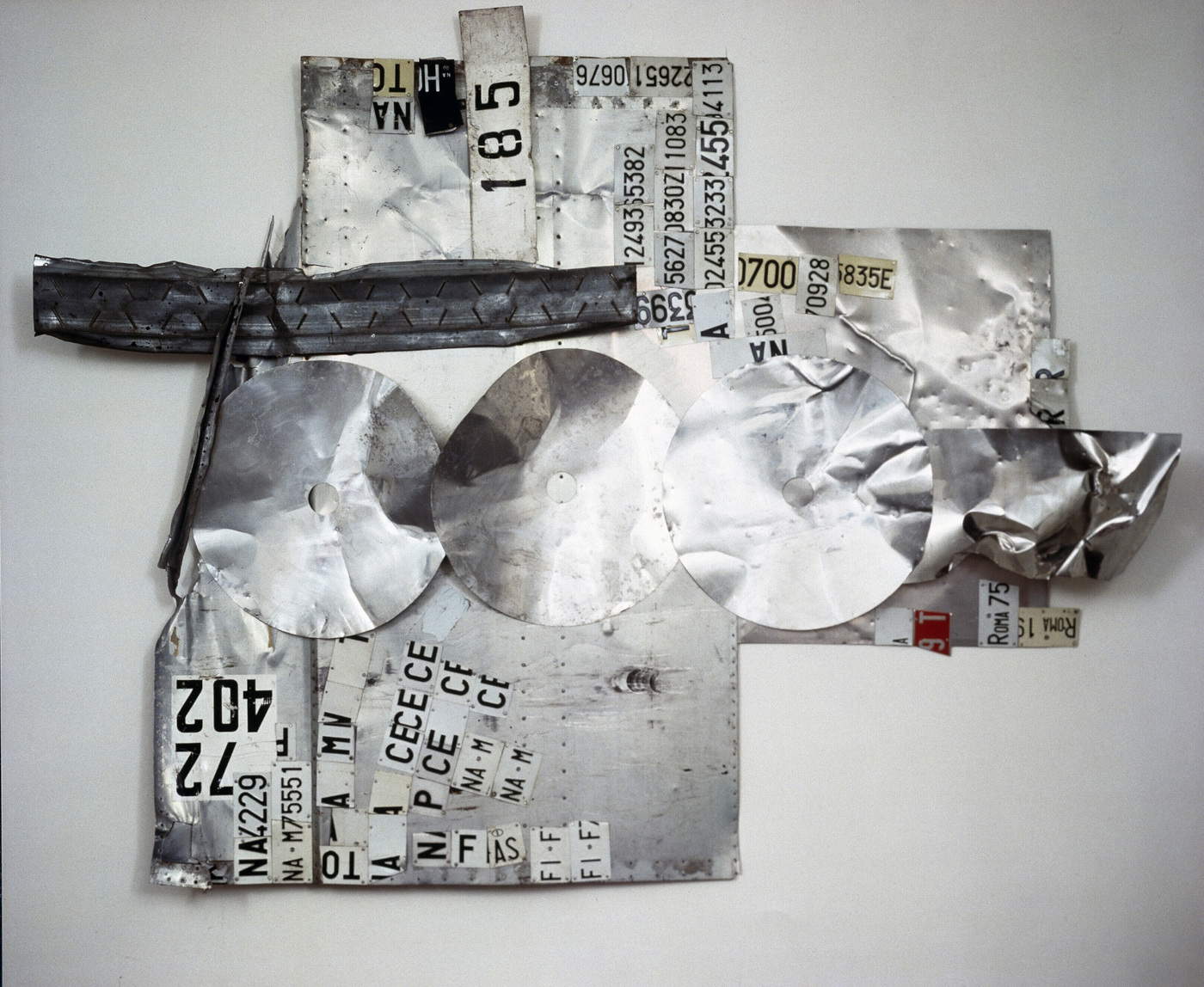From May 29 to October 5, 2025, the Gallerie d’Italia in Milan is hosting the exhibition An Unexpected Collection. The New Art of the Sixties and a Homage to Robert Rauschenberg, curated by Luca Massimo Barbero, associate curator for modern and contemporary art in the Intesa Sanpaolo collections. Once again, Intesa Sanpaolo opens the doors of its art collections, offering the general public an exhibition itinerary made possible thanks in part to the invaluable contribution of the Luigi and Peppino Agrati collection, now an integral part of the bank’s artistic heritage. A unique opportunity to immerse oneself in the evolution of contemporary art through works rarely exhibited together.
The exhibition, which includes more than 60 works, unfolds in the exhibition spaces of the Gallerie d’Italia in Milan, taking visitors on a journey from the radical experimentation of the 1960s to the main developments of the following decade. The itinerary is enriched by dialogues between representative works of European and American conceptual art.
The centerpiece of the exhibition is a tribute to the celebrated artist Robert Rauschenberg, whose birth centenary falls on this year. On this special anniversary, the deep connection between the artist and Italy is celebrated, but also his relationship with Peppino Agrati, friend and collector. Precisely because of this relationship, it is now possible to present a nucleus of 17 works, including the famous Blue Exit from 1961. Also of particular interest is the bond between Agrati and gallery owner Lucio Amelio, documented in the exhibition by the 1987 work Transmitter Silver Glut, from a historic exhibition organized by the Neapolitan gallery owner. Along with drawings and large works, there are lithographs that recount not only the technical evolution made innovative by Rauschenberg, but also his way of confronting the social and political imagery of his time.
This is the first occasion in which the entire collection of Rauschenberg’s works belonging to the Agrati brothers is shown to the public: a rare opportunity to appreciate the importance the American artist attached to composition and graphics, central aspects of his expressive language.
The exhibition also offers a dialogue between protagonists of the art scene such as Yves Klein, Lucio Fontana and Piero Manzoni and the emerging artists who marked the early 1960s, including Giulio Paolini, Robert Ryman and Richard Serra. As in a resetting of the surface, the curator compares masters of contemporary art from both sides of the Atlantic, in an interweaving of minimalism and monochrome, with works by Carl Andre, Robert Mangold, and Enrico Castellani. Further insight into the new imagery of that decade includes names such as Michelangelo Pistoletto, Jannis Kounellis, Edward Ruscha, Jasper Johns, Andy Warhol, James Rosenquist, Roy Lichtenstein, and Jean-Michel Basquiat.
Becoming part of Intesa Sanpaolo’s holdings thanks to the generous donation of the Agrati family, the Luigi and Peppino Agrati Collection represents one of the most significant collections of second-century art in Italy. The current exhibition continues a path of enhancement already started with the exhibitions Art as Revelation (2018) and An Unexpected Collection: Journey into the Contemporary (2023).
Started in 1968 by Luigi and Peppino Agrati, two entrepreneurs who were exponents of Lombardy’s enlightened bourgeoisie, the collection was later continued by Luigi, who together with his wife chose to donate it to the bank. It includes masterpieces by international artists such as Andy Warhol, Jean-Michel Basquiat, Robert Rauschenberg, and Christo, alongside major protagonists of Italian art such as Lucio Fontana, Piero Manzoni, Mario Schifano, Alberto Burri, and Fausto Melotti. Many of these artists were linked to the Agrati’s by relationships of friendship and dialogue.
From Informal to Pop Art, from Arte Povera to Conceptual Art, and on to Neoexpressionism and Transavantgarde, the collection reflects and traverses the movements that defined contemporary art in the second half of the twentieth century, in Italy and around the world. It is a body of work that testifies to a deep passion, an intellectual and social sensitivity directed toward individual artists and the context in which they worked, and a close relationship between collector, artist and the meaning of the work.
The exhibition will be accompanied by events from the #INSIDE program, free and open to all.
Hours: Tuesday, Wednesday, Friday, Saturday and Sunday from 9:30 a.m. to 7:30 p.m.; Thursday from 9:30 a.m. to 10:30 p.m. Closed Mondays.
Pictured: Robert Rauschenberg, Silver Transmitter Glut (Neapolitan) (1987; metal assemblage and car plates, 249 x 320 x 32 cm; Luigi and Peppino Agrati Collection - Intesa Sanpaolo)
 |
| Milan, the entire nucleus of Rauschenberg's works from the Agrati collection on display at the Gallerie d'Italia |
Warning: the translation into English of the original Italian article was created using automatic tools. We undertake to review all articles, but we do not guarantee the total absence of inaccuracies in the translation due to the program. You can find the original by clicking on the ITA button. If you find any mistake,please contact us.